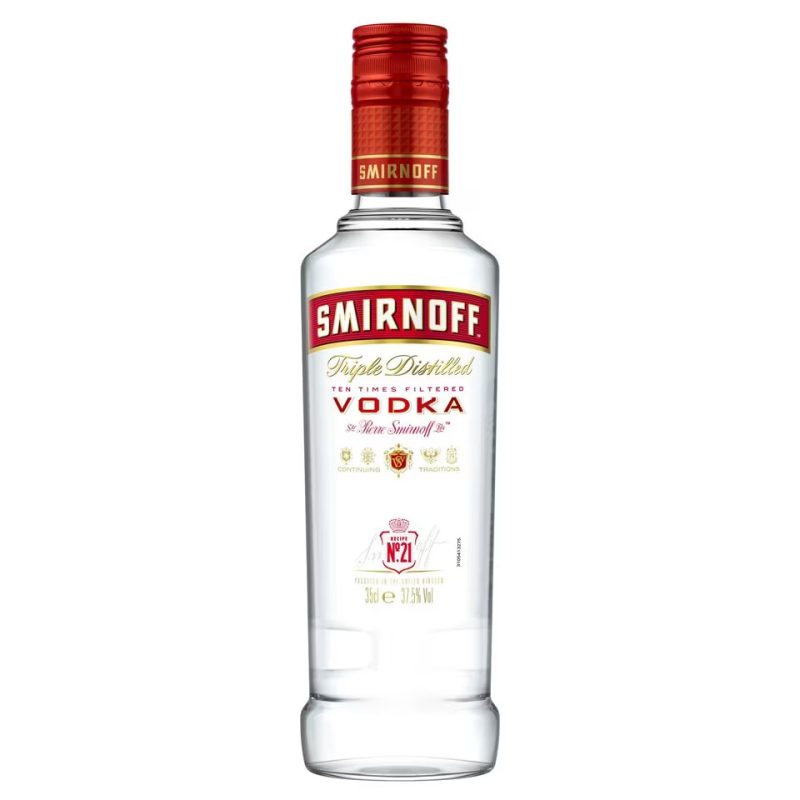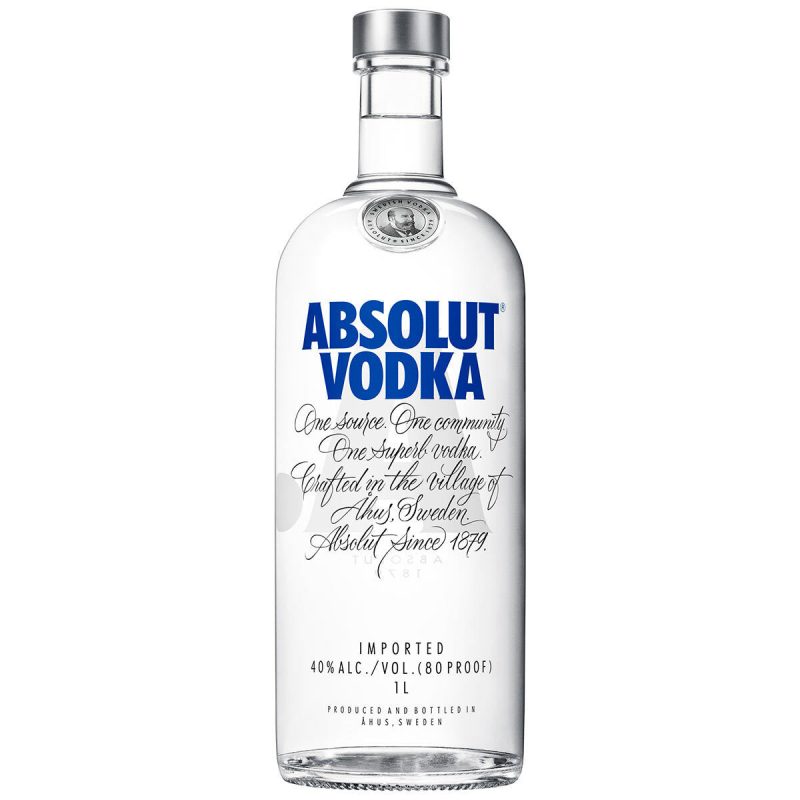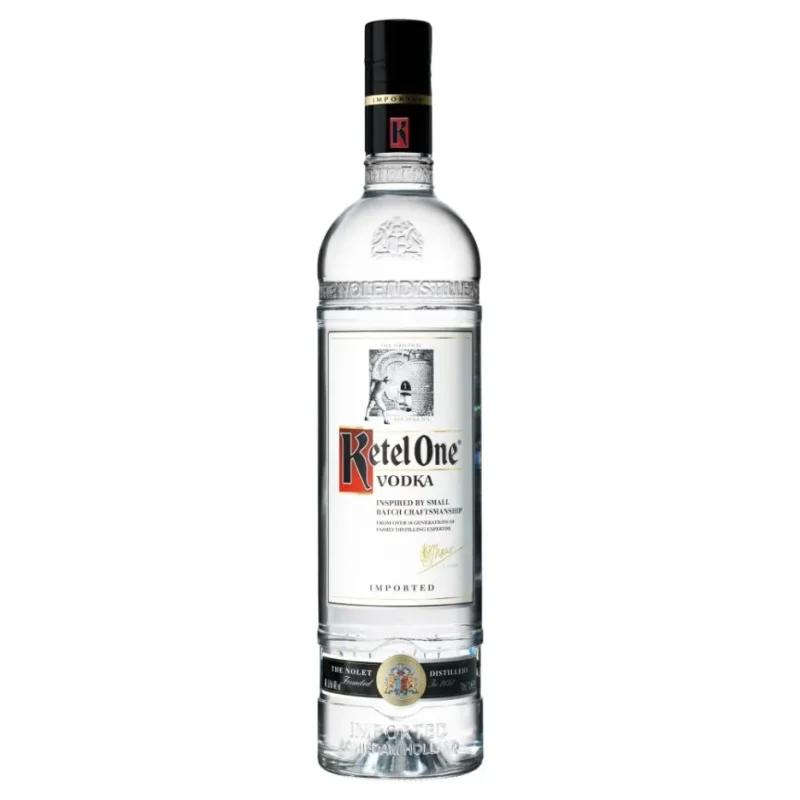Ever wondered what secret ingredient makes vodka the ultimate clear spirit that’s taken the cocktail world by storm? Spoiler alert: it’s not magic, unicorn tears, or a clandestine chemical concoction—it’s simply alcohol! But wait, there’s a whole lot more to the story than meets the eye (or the palate). In this deep dive, we’re peeling back the layers of vodka’s mystique to reveal the real alcohol behind the buzz, exploring its production, chemistry, cultural impact, and even a few quirky myths along the way. So buckle up, grab your favorite cocktail (responsibly, of course), and get ready for a wild ride through the world of vodka.
What Alcohol Is In Vodka Table of Contents
Understanding Vodka: More Than Just a Clear Spirit
What Alcohol Is In Vodka? Breaking It Down
The Science Behind Vodka Production: Fermentation, Distillation, and Beyond
Unpacking Alcohol By Volume (ABV) in Vodka
Mixology Magic: How Vodka Transforms Cocktails
The Historical Roots and Cultural Influence of Vodka
Debunking Vodka Myths: The Truth About Its Purity and Flavor
Chemistry in a Glass: The Molecular Structure of Vodka
Vodka vs. Other Spirits: What Sets It Apart?
The Role of Vodka in Modern Pop Culture and Social Scenes
Responsible Drinking: How to Enjoy Vodka Safely and Smartly
Exploring Vodka Variations: From Traditional to Trendy
The Future of Vodka: Trends, Innovations, and Sustainable Practices
Resources and Community Support: Your Next Steps
Creating Your Personalized Vodka Experience
Vodka Insights: Expert Tips and Trivia
Vodka in the Digital Age: Engaging with the Community
FAQs About Vodka: Your Burning Questions Answered
Embracing Vodka: A Journey Beyond the Glass
Looking For The Best Vodka? You'll Love These Vodka Guides...
Understanding Vodka: More Than Just a Clear Spirit
Vodka is often dubbed the “blank canvas” of the alcohol world—a spirit so neutral that it invites mixologists and home bartenders alike to create a world of possibilities behind every cocktail. But what exactly is vodka made of? At its core, vodka is a distilled beverage containing ethanol (ethyl alcohol) and water, along with tiny traces of other compounds that sometimes lend it that signature subtle character. While the process may sound straightforward, the journey from humble grains or potatoes to that impeccably clear bottle on your shelf is rife with science, tradition, and a dash of wizardry.
The vodka journey begins with simple ingredients—grain, potato, or even fruit—undergoing fermentation to produce ethanol. Distillation and multiple filtrations later, the end result is a drink that is—almost—pure alcohol mixed with water. The clarity of vodka isn’t just a quirky trademark; it’s a reflection of the high-quality distilling process designed to minimize impurities. This means that when you sip vodka, you’re enjoying a spirit that is, by its very nature, overwhelmingly alcoholic—though tempered by the water that brings it back down to a more palatable strength.
What Alcohol Is In Vodka? Breaking It Down
Let’s get technical for a minute (don’t worry, we’re keeping it fun). The main alcohol found in vodka is ethanol (C2H5OH), which is the only type of alcohol safe for human consumption in regulated amounts. Ethanol is produced during the fermentation process, where yeast converts sugars into alcohol and carbon dioxide. In vodka, after fermentation, this mixture is distilled to remove impurities—like an overzealous cleanup crew scrubbing away everything but the finest ethanol and water.
You might ask, “But isn’t alcohol just alcohol?” In many ways, yes—ethanol is ethanol. However, the nuance lies in purity and concentration. Vodka is typically distilled multiple times and filtered (often through charcoal) to achieve its trademark clarity and smooth taste. In its final form, vodka runs at a proof that usually translates to around 40% alcohol by volume (ABV), though there are variations that dip a bit lower or soar a bit higher. The astounding journey from fermentation to a beautifully neutral spirit is what makes vodka a staple in bars and households around the world.
To sum it up simply: the alcohol in vodka is ethanol, meticulously purified through distillation and filtration processes that transform raw ingredients into a sleek, versatile beverage. It’s the same compound in your other favorite cocktails—just stripped down to its bare essentials!
Best Budget Vodkas Ranked
The Science Behind Vodka Production: Fermentation, Distillation, and Beyond
The evolution of vodka from basic ingredients to the sparkling spirit in your glass is a process as fascinating as it is methodical. It all starts with fermentation—the natural process where yeast feasts on sugars from starches (like those found in wheat, rye, potatoes, or even corn) and turns them into ethanol. Think of it as a microscopic feast where yeast throw a wild party that produces alcohol as the main entertainment.
Once fermentation has done its magic, the liquid is subjected to the art of distillation. This process involves heating the fermented liquid to a temperature where ethanol evaporates but water largely remains. The ethanol vapors are then captured, cooled, and condensed into liquid form, resulting in a spirit with a much higher alcohol concentration. Distillers might perform this process multiple times to extract and purify every drop of ethanol, ensuring that most impurities are left in the dregs.
Filtration is another key step, often involving charcoal filters that help to strip away any residual impurities. Some vodka producers claim that their carefully selected filtration materials help to refine the spirit’s texture and overall character. The result? A smooth, neutral spirit that can serve as the base for over 3,000 cocktail variations or be enjoyed neat if you’re feeling particularly adventurous.
Unpacking Alcohol By Volume (ABV) in Vodka
If you’ve ever picked up a bottle of vodka, you’ve probably glanced at the label and seen the term “40% ABV.” But what does that really mean? Alcohol by Volume (ABV) is a measure of the amount of alcohol (ethanol) present in a beverage as a percentage of the total volume. In vodka, the 40% ABV standard strikes a balance between delivering that punch of ethanol and ensuring the drink remains smooth and palatable.
This percentage is the result of dilution—the distilled spirit (which can sometimes be well over 90% ABV) is mixed with water to achieve the desired strength. It’s like the final touches on a masterful painting; the water tones down the intensity of the ethanol, allowing the subtle flavors and nuances to shine through. Of course, not all vodkas stick to the strict 40% rule—variations exist, but the majority of brands use this standard as it fits neatly into both legal regulations and consumer preferences.
The ABV not only defines the strength of the drink but also influences the mouthfeel, the burning sensation on your palate, and even the cocktail’s overall balance when mixed. A higher ABV can deliver more impact, while a balanced 40% ABV is often chosen for its versatility.
Mixology Magic: How Vodka Transforms Cocktails
Vodka’s reputation as a chameleon in the beverage world isn’t just marketing fluff—it’s backed by its inherent neutrality. This neutral profile means vodka can seamlessly blend with practically any flavor, making it a beloved choice in endless cocktail recipes. From the classic Vodka Martini to contemporary creations like vodkas infused with fruit or herbs, the versatility of vodka is unparalleled.
When you mix vodka with fruit juices, spices, or sodas, the result is a cocktail where vodka doesn't overpower but rather enhances the other flavors. It’s like the supportive best friend who lets your personality shine while providing that essential kick. Whether you're a seasoned cocktail aficionado or a curious novice, vodka’s role in mixology is always central, offering endless possibilities for creativity.
So next time you sip on a Cosmopolitan or shake up a Moscow Mule, remember that underlying that vibrant cocktail is vodka’s incredible distillation journey—from its humble roots as ethanol to the dazzling star of your next spirited evening.
The Historical Roots and Cultural Influence of Vodka
Vodka is more than just a modern mixology marvel—it has deep historical roots that trace back centuries. Originating from Eastern Europe, particularly Russia and Poland, vodka has been a part of culture, tradition, and communal celebrations for generations. Its name even invokes images of “small water” in Slavic languages, emphasizing its purity and regenerative quality.
Over the centuries, vodka evolved from a simple home-brewed remedy to a symbol of hospitality and national pride. In Russian tales and Polish legends alike, vodka is intertwined with celebrations, rituals, and even art. Alcohol, especially vodka, has served as a communal bond—an icebreaker among strangers and the spirit behind countless toasts and epic tales.
Today, vodka’s cultural significance spans the globe. It’s the spirit of choice at chic bars from New York to Tokyo, a favorite for both traditional cocktails and avant-garde experimental drinks. Its clean, crisp taste makes it a beloved base in the worlds of craft mixology and high-end distilleries alike. For millennials and Gen Z alike, the resurgence of craft cocktails and artisanal spirits has revived vodka’s image as both a classic and a canvas for innovation.
Debunking Vodka Myths: The Truth About Its Purity and Flavor
Vodka has been the subject of many myths, tall tales, and legendary anecdotes. One of the most pervasive myths is that vodka is completely flavorless. While it’s true that vodka is designed to be neutral, allowing it to mix seamlessly with other ingredients, subtle flavors and textures can still be present. These nuances might come from the base ingredient—whether it’s wheat, rye, potatoes, or even grapes—or the specific distillation process employed by the distiller.
Another myth is that all vodka tastes the same. In reality, the devil is in the detail: differences in water quality, the number of distillation cycles, and the method of filtration can result in markedly different tasting experiences. Some vodkas are celebrated for their creamy mouthfeel, others for a crisp, zingy edge that leaves your taste buds tingling.
The truth is that vodka’s strength lies precisely in its ability to act as the understated star of your cocktail. It’s the unsung hero that brings balance, clarity, and a sense of sophistication without stealing the social spotlight. Next time someone asks if vodka is “just water with a kick,” feel free to drop some knowledge about its carefully engineered production and the subtle flavors that make each bottle unique.
Chemistry in a Glass: The Molecular Structure of Vodka
For those with a penchant for science (or a curiosity fueled by a few cocktails too many), let’s explore the molecular magic behind vodka. Ethanol, the primary alcohol in vodka, has a simple yet fascinating structure: two carbon atoms, six hydrogen atoms, and one hydroxyl group (C2H5OH). This structure is responsible for its volatility, its ability to mix well with water, and yes, its intoxicating effects.
The mixture of ethanol with water in vodka is a classic example of how chemistry can result in something both functional and fun. Pure ethanol is rarely consumed on its own due to its potency and harshness, which is why water is added to bring it down to a more manageable—and enjoyable—strength. This alcohol-to-water ratio plays a pivotal role not just in the flavor profile but also in how vodka interacts with other ingredients in a cocktail.
In the lab of the master distiller, every step is meticulously calibrated so that the final product achieves the ideal balance between smoothness and strength. The molecular structure of ethanol ensures that even when diluted, the intermingling of molecules creates a spirit that is both efficient in delivering its punch and graceful in its finish.
Vodka vs. Other Spirits: What Sets It Apart?
In the vast landscape of alcoholic beverages, vodka stands out as one of the most versatile and unassuming spirits. But how does it compare to its spirited cousins like rum, tequila, gin, or whiskey? The answer lies in vodka’s unique production process and its inherent neutrality. Unlike rum, which is derived from sugarcane, or tequila, born from the agave plant, vodka is defined by its clean, crisp palate that allows other flavors to shine.
Gin, for instance, is essentially a flavored vodka, with botanicals like juniper and citrus infusing it with characteristic aromas. Whiskey, on the other hand, boasts complex flavors derived from aging in wooden barrels—a process that imbues it with smoky, oaky tendencies. Vodka’s lack of strong inherent flavor makes it the ideal companion for creative mixology, as it acts as a versatile base that can be adapted to virtually any cocktail formula.
For those who appreciate the nuances of different spirits, understanding vodka’s position in this diverse world of alcohol can open up new avenues of exploration. Whether you’re shaking up a classic martini or experimenting with the latest trendy cocktail recipe, vodka offers a blank canvas on which to create your own masterpiece.
The Role of Vodka in Modern Pop Culture and Social Scenes
Vodka has come a long way from being a strictly Eastern European tradition—it has evolved into a global icon that resonates with a modern, dynamic crowd. For millennials and Gen Z, vodka symbolizes more than just a drink; it’s a lifestyle accessory, a common thread at parties, social gatherings, and even in art and music scenes.
From upscale nightclubs to underground speakeasies, vodka’s presence is ubiquitous. Celebrity endorsements, slick marketing campaigns, and a growing trend towards infused and artisanal vodkas have all played a part in cementing its status as a trendy, go-to beverage. Whether it’s served in a highball, a cocktail shaker, or even a mason jar at a hip festival, vodka adapts to any setting with ease and style.
Social media influencers and mixology enthusiasts often share their innovative vodka concoctions online, inspiring a new generation of drinkers to experiment and create. Vodka’s image as the ultimate blank slate encourages creative freedom—reminding everyone that sometimes, the best art is found in the simplest of ingredients.
Responsible Drinking: How to Enjoy Vodka Safely and Smartly
While the allure of a well-crafted vodka cocktail is undeniable, it’s important to remember that vodka is still a potent spirit. Responsible drinking is key to ensuring that your fun-filled nights stay safe and enjoyable. Understanding the alcohol in vodka—primarily ethanol—means being aware of its effects on your body.
Moderation is the name of the game. Ethanol can impact cognitive function, coordination, and decision-making. It’s crucial to know your limits and to pace yourself, especially when experimenting with cocktails that pack a powerful punch. Hydration is equally important—alternating your favorite vodka drinks with water or non-alcoholic beverages can help prevent dehydration and the dreaded morning-after woes.
For those new to the world of spirits, starting slow and paying attention to how your body responds can make all the difference. And if you’re out with friends, having a designated driver or using a ride-share service ensures that everyone remains safe. Vodka is best enjoyed when it brings people together in fun, creative, and safe social settings.
Exploring Vodka Variations: From Traditional to Trendy
Gone are the days when vodka was simply a clear, unflavored spirit. Today’s vodka market is brimming with creative variations that add flair and flavor—from subtle infusions of herbs and fruits to bold, experimental blends that challenge taste expectations. These innovative twists are particularly popular among millennials and Gen Z drinkers, who are always on the lookout for the next big cocktail trend.
Traditional vodka, characterized by its purity and neutral profile, remains a beloved favorite among purists and mixologists alike. However, flavored vodkas have carved out their own niche. Imagine a splash of zesty lemon, a hint of spicy pepper, or even a dash of sweet vanilla—each infusion adds a unique twist, allowing bartenders to craft cocktails that are as visually stunning as they are delicious.
The rise of artisanal and craft vodkas has also spurred a movement towards small-batch distillation. These vodkas often emphasize local ingredients, unique production techniques, and a commitment to quality over quantity. In an era where authenticity and sustainability matter, these brands resonate deeply with younger consumers who value transparency and storytelling in their drink choices.
The Future of Vodka: Trends, Innovations, and Sustainable Practices
As the beverage industry continues to evolve, vodka is on the cutting edge of several exciting trends. Technological advancements in distillation and filtration are pushing the boundaries of purity and smoothness, while new flavor combinations keep the market buzzing with creativity. But it’s not all about innovation—sustainability is increasingly becoming a critical component in vodka production.
Many modern vodka distilleries are implementing eco-friendly practices, from sourcing organic grains to using renewable energy and sustainable packaging materials. These efforts speak to an audience that cares deeply about the impact of their purchases on the planet. For the environmentally conscious consumer, supporting a brand that prioritizes sustainability not only feels good—it tastes good, too.
Looking ahead, the fusion of tradition and technology promises to deliver vodkas with even more refined profiles, enhanced quality, and an emphasis on ethical production. This exciting evolution ensures that vodka will remain at the forefront of both cultural and beverage innovation for years to come.
Resources and Community Support: Your Next Steps
Whether you’re a budding mixologist, a casual cocktail enthusiast, or someone proud to appreciate the art of vodka, there are plenty of ways to deepen your knowledge and connect with like-minded individuals. Online communities on platforms like Reddit, dedicated cocktail blogs, and even local tasting events provide fertile ground for learning, sharing, and expanding your palate.
Many distilleries now offer virtual tours and behind-the-scenes looks at their production, providing an insider’s view into the craft of vodka making. Educational resources, such as detailed infographics, cocktail recipe e-books, and interactive tasting sessions, are also becoming more widely available. These resources not only enhance your understanding of what alcohol is in vodka but also invite you to explore new flavors and techniques.
Embrace the journey—join online forums, attend local events, or even take mixology classes. Engage with communities passionate about spirits and contribute your own discoveries. Your next steps might involve visiting a craft distillery, trying out a new flavored vodka, or simply sharing your favorite recipe with friends. The world of vodka is rich, diverse, and waiting for you to explore.
Creating Your Personalized Vodka Experience
Crafting the perfect vodka experience is as much an art as it is a science. Start by exploring different brands and styles, and pay attention to how subtle variations in production and filtration techniques influence the overall character of the spirit. Are you drawn to that extra-smooth finish of a multiple-distilled vodka, or do you prefer the slight hint of grain that comes from a traditionally crafted bottle? Your palate is your guide.
Here are a few tips for creating your bespoke vodka journey:
- Experiment: Try a variety of vodkas—from the classic, neutral types to the innovative, flavored options. Notice the differences in mouthfeel, aroma, and finish.
- Mix It Up: Don’t limit yourself to neat sips. Get creative with cocktails, whether it’s a rugged Moscow Mule, a refined Vodka Martini, or a custom creation that taps into the latest mixology trends.
- Educate Your Palate: Take a moment during each tasting to appreciate the nuances. Consider the texture, the balance of alcohol and water, and even the backstory of the brand that produced it.
- Connect with Others: Share your experiences and engage with communities who appreciate the craft of vodka. Discussion forums, tasting events, and mixology clubs can all be great resources.
- Stay Informed: Follow industry news, join webinars, and subscribe to newsletters from your favorite distilleries to learn about the latest innovations and trends.
Crafting a personalized vodka experience not only elevates your drinking ritual but also connects you with a broader community of enthusiasts who share your passion. So why not start today, explore new horizons, and toast to your own unique journey in the world of vodka?
Vodka Insights: Expert Tips and Trivia
No discussion of vodka would be complete without sprinkling in some expert tips and fun trivia. For example, did you know that water plays as critical a role in vodka as alcohol does? The quality and source of the water used can influence the spirit’s clarity and overall taste—a detail that many aficionados scrutinize just as closely as the distillation process.
Some tip-top bartenders recommend chilling vodka in a freezer (without any additives, of course) since its high alcohol content prevents it from freezing. This creates an ultra-smooth, almost syrupy texture that can enhance the drinking experience—especially when sipping neat. Meanwhile, creative mixologists are always finding fresh ways to integrate vodka into their signature drinks, whether it’s through infusions, reductions, or even pairing it with unexpected ingredients like tea or basil.
And here’s a quirky tidbit: the word “vodka” comes from the Slavic word for “water,” highlighting the spirit’s reliance on one of nature’s most fundamental elements. Quite the ironic nod, isn’t it?
Vodka in the Digital Age: Engaging with the Community
In today’s interconnected world, enjoying vodka isn’t just about the drink itself—it’s also about the conversation behind it. Whether you’re scrolling through Instagram stories of cocktail creations, watching mixologists on YouTube, or participating in lively discussions in online forums, digital platforms provide an exciting space to share your passion.
Many brands now host live events, virtual tastings, and interactive Q&A sessions where you can dive deeper into the art of vodka making. These digital initiatives not only educate but also foster a sense of community among enthusiasts. By engaging with the digital world, you unlock a treasure trove of recipes, production insights, and behind-the-scenes sneak peeks that make every sip even more enjoyable.
So next time you pour yourself a glass, take a moment to check out your favorite vodka brand’s social media—it might just inspire your next cocktail experiment or introduce you to a brand-new variety!
FAQs About Vodka: Your Burning Questions Answered
We know you might still have some questions swirling around in your mind about vodka, its production, its history, and its role in modern culture. Check out our FAQ section below for some quick answers to the most common queries:
1. What alcohol is actually in vodka?
Vodka is primarily made of ethanol (C2H5OH)—a type of alcohol produced by fermentation and purified through distillation. The final product is a blend of ethanol and water, usually around 40% alcohol by volume (ABV).
2. Can vodka have flavors?
Absolutely! While traditional vodka has a neutral flavor profile, many brands offer infused and flavored variations that incorporate fruit, herbs, and spices to create unique taste experiences.
3. How is vodka different from other spirits like gin or whiskey?
Vodka is known for its neutral character and smooth finish, whereas gin is flavored with botanicals like juniper, and whiskey undergoes aging in barrels to develop a richer, more complex flavor.
4. Is it true that vodka is completely tasteless?
Not exactly. While vodka is designed to be neutral, subtle flavors and textures exist due to differences in base ingredients, distillation methods, and filtration techniques.
5. Why do some people store vodka in the freezer?
Storing vodka in the freezer is popular because its high alcohol content prevents it from freezing, resulting in a smoother, thicker texture that many drinkers enjoy neat.
6. Can I use vodka in cooking?
Yes! Vodka is a popular ingredient in cooking, most notably in vodka sauce for pasta, where it helps to release flavors and create a creamy texture.
7. Are there low-alcohol vodkas available?
There are variations with lower ABV levels, though the classic vodka recipe typically centers around the standard 40% ABV for balance and purity.
8. What’s the best way to taste vodka?
The best way to taste vodka is neat in a tulip glass at a comfortable temperature, allowing you to appreciate its subtle nuances before enjoying it in cocktails.
Embracing Vodka: A Journey Beyond the Glass
From the fermentation vats to the distilled shimmer in your glass, vodka represents an incredible blend of art and science. Its neutral profile, rooted in the purity of ethanol and water, serves as the perfect foundation for both timeless cocktails and modern mixology experiments. As you explore the nuances of vodka—from its production techniques and chemical marvels to its cultural significance and trendy variations—you begin to appreciate it as more than just a clear spirit. It’s a versatile companion for celebrations, a muse for creative expression, and a testament to centuries of tradition meeting modern innovation.
Whether you’re a seasoned enthusiast or a curious newcomer to the world of vodka, this journey invites you to enjoy every sip, share a laugh over quirky myths, and experiment with new recipes. As you pour that next glass, remember that vodka is more than just alcohol—it’s a gateway to exploration, connection, and endless possibilities in the world of cocktails.
So here’s to vodka—a spirit that continues to evolve, surprise, and inspire. Raise your glass high, mix up something extraordinary, and join the vibrant community that celebrates this incredible drink. Cheers to exploration, innovation, and the timeless joy of a well-crafted cocktail!
















